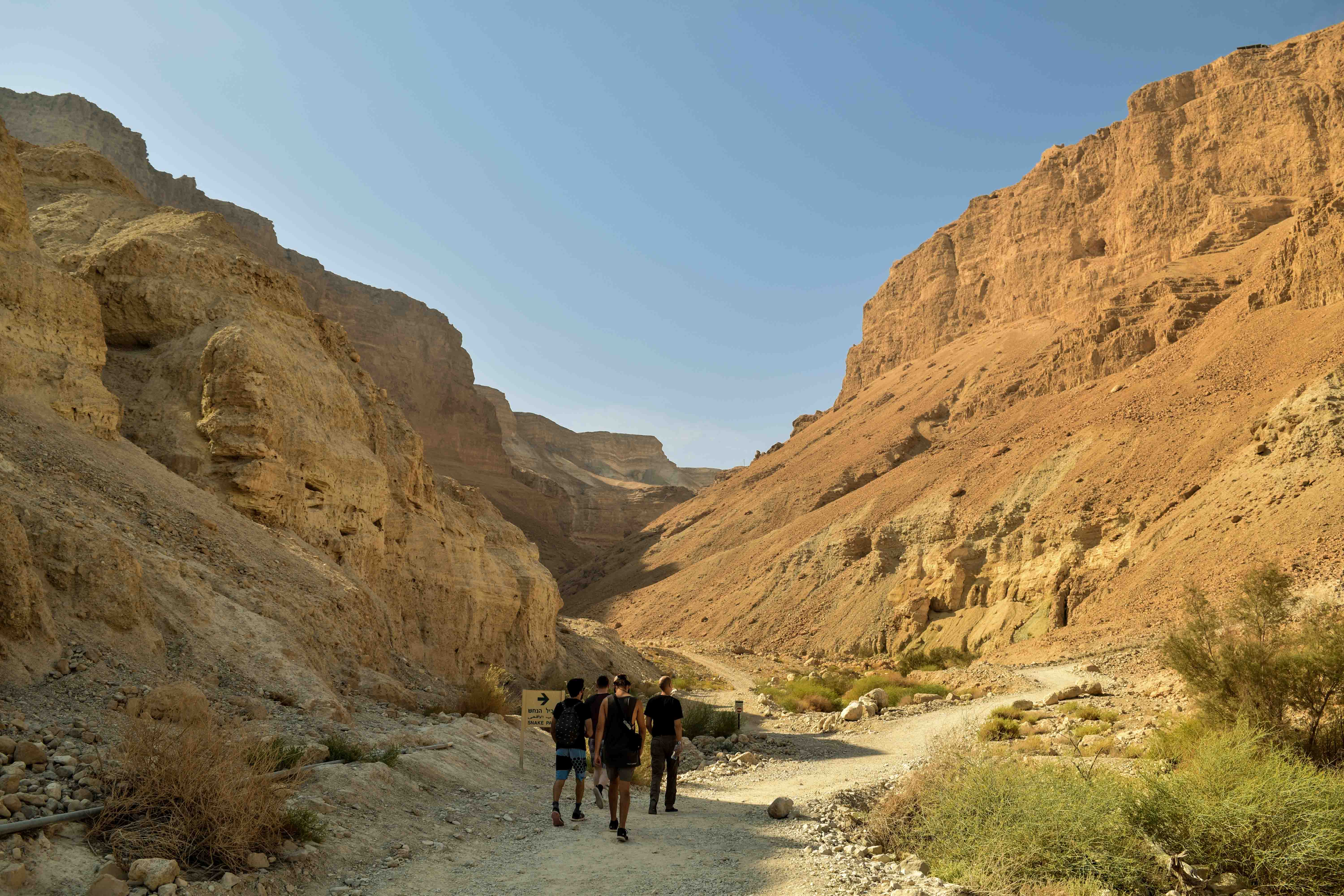A sudden turn in an hour-long drive along Route no 31, snaking around the Dead Sea, the lowest point on Earth, brings you to a rather weird place. And in the midst of that almost Martian landscape emerges the fortress of Masada, like a mirage in the Judean desert. A barren landscape, the Dead Sea in the distance, and perched on the top of a mountain, a centuries-old fortress holding tales of a fall of a Judean empire and rise of a Roman one. Naturally protected atop a hill, Masada was considered unconquerable. And even from downhill, one can see the remnants of the palace, jutting over the lip of the cliff. But the massive defenses of a once-mighty fortress built by Judean emperor Herod the Great fell against the battle-hardened, and much war tactical Roman army.



I hike my way to the top, catching on the remnants of this mighty fortress. In A.D. 73, this area turned into a battlefield for the First Jewish-Roman war, a stand-off between 1000 Jewish Sicarii rebels and a 10,000-strong Roman garrison. Laid out in front of me is the ingenious strategy employed to siege the fortress. The most prominent of the strategy employed was the development of a ramp leading to a back wall of the fortress. The battle signs are before my eyes; I can almost imagine the battle fought centuries ago which changed the history of this place.
Masada is now a UNESCO world heritage site, but more than that Masada is now a symbol of nation-building among Jews. Masada’s history is shared through details penned by Roman historian Josephus Flavius, the commander of the Jewish forces during the First Jewish-Roman War, who held Masada to mythical proportions. Masada sits on a splendid strategic location, out in nowhere, on a plateau that is part of a cliff, with three smaller and difficult to navigate cliffs nearby, and three narrow paths leading to its gates. The location and the building style with three storeys jutting out of the hill provided not just the location advantage, but also a wide-open canvass to see the approaching enemies.




Masada was a place of safety and security for ages, but two events changed this historic place forever. The first was the Great Revolt of the Sicarii Jews against the Romans, who then fled from Jerusalem and settled in Masada. More and more of the Sicarii relocated to Masada in the years after the revolt as the conflict with other communities increased. The first event of rebellion led to Romans planning to take the fortress back with a daunting force of 10,000 men, building walls and ramps to lay the siege. A battle was evident, and Sicarii’s losing the battle was the known truth. In Josephus Flavius’s words, the Sicari armed with basic weaponry and fired by religious zeal fought the final battle and held the Roman army for over a year. When the Romans finally breached the fort by way of the great ramp, inspired by their leader Eleazar Ben Yair the Jews decided to kill each other as suicide is an act of cowardice and death is nobler than slavery. When the Romans ultimately breached the walls, they were at a loss to conjecture what had happened here.
In Josephus’s words – “The Romans were at a loss to conjecture what had happened here, encountering the mass of slain. Instead of exulting as over enemies, they admired the nobility of their resolve and the contempt of death display by so many carrying it, unwavering, into execution.”


Standing at one of the edges, I can hear the strong desert winds whooshing by. The place is unreal. It communicates a strong message, and instills a sense of disbelief; a place so reverent, itched deep in the history of the land. The story of the war in Masada is told to Israeli students to instill love and devotion towards the country. The stories and myths surrounding the Masada have turned the poetic views into a national beacon of hope and made the past a symbolic interpretation of the future. So ingrained is the fortress in the history and future of the nation, that once this was the site for the swearing-in ceremony of the Israeli Defence Forces, and the oath the cadets were sworn to “Masada shall not fall again”.



Even today you can see scores of school buses with kids lined up almost every day. It’s interesting to see how history is ingrained in the nation-building enterprise.
I go from one impressive spot to the other, starting with the Northern Palace. The top level of the palace was used by Emperor Harod, and the lower ones were for notable guests and ministers. I go to the observation point to look at the vast landscape before me and gain an appreciation for Masada’s strategic advantage. From there I go to the Western Palace, the largest structure in Masada, with a courtyard, small palaces, public pools, and large cisterns for water harvesting. Here my guide explains the complex ways Sicarii Jews harvested water from the springs and seasonal rivulets, miles away from the palace. Well-marked trails along the sites with elaborate descriptions bring the history of the place so much closer to the travelers.

But the most haunting part is the breaching point, and as the guide explains, the entire scene unfolds in your mind. It’s a sobering place to stand; behind you are the remnants of Masada and the spots where so many people died, and in front of you are the remnants of the Roman camps. Listening to the guide telling you the story of the siege and the deaths, you feel heavy under the weight of history and myths around Masada. Nothing can prepare you for the majesty of Masada. The history and culture, and mythology that surrounds this place are mind-boggling.
Descending from Masada I can see the Dead Sea in the distance. And no trip to Israel can be complete without a dip in the Dead Sea. The thought of floating in a massive lake sends a chill down the spine. And so, my next stop is the Ein Gedi, one of many day spas dotting the shoreline, to soak myself in in warm mineral-springs pools, smear some clammy black mud from the sea’s bottom, and then back to Jerusalem old city to buy some Dead Sea mud products, and probably to host a Dead Sea mud spa party back at home.











